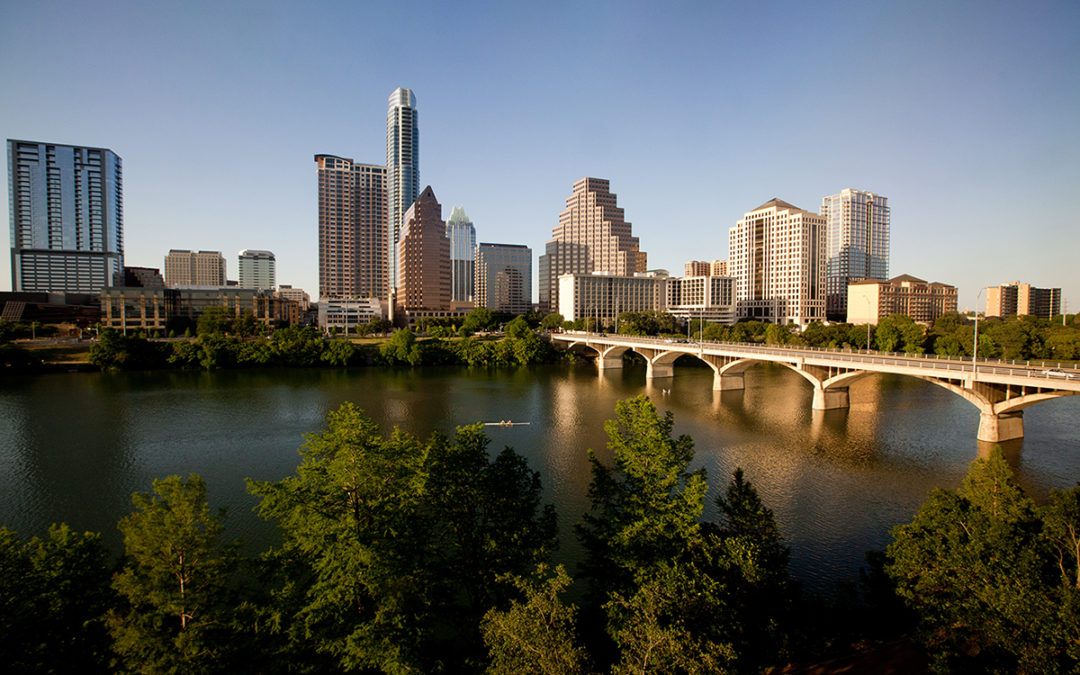One of the major themes in the green schools movement today is the idea of sustainability as a driver for innovation in education. It is a topic that I am deeply passionate about, and one you will be hearing more about throughout the year and beyond!
As executive director of the Green Schools National Network (GSNN), I have the privilege to speak to a number of audiences throughout the year about the green schools movement and GSNN’s work. This year, my aim is to help educators, school decision makers, and other green schools stakeholders better understand how sustainability drives innovation in education, and how they can make it happen in their schools, districts, and communities.
On May 16th, I had the opportunity to speak in Austin, Texas at the RTM School Planning & Facilities and School Innovation Congress. This event brought together senior leaders from districts around the country to deepen their understanding of innovation in teaching, learning, and facilities management. I was joined in Austin by co-presenters Joe Biluck, Director of Operations and Technology at Medford Township Public Schools (NJ), and Leighangela Brady, Assistant Superintendent, Educational Services for the Encinitas Union School District (CA), to lead a session entitled “When Sustainability Drives Innovation in Education…”. Our goal for this session was to demonstrate to the attendees how the triple bottom line of sustainability can influence innovation in education to help school districts save money and avert expenses while increasing student well-being and achievement.
Each of us brought a unique perspective to share around the session’s theme. As the opening speaker, I shared my vision of what a green, healthy, and sustainable school looks like. This included introducing the Three Pillars + 1 (reducing environmental costs, improving health and well-being, promoting environmental and sustainability literacy, and leadership) and describing how each contributes to the creation of a green school.
My talk was followed by Joe Biluck, who spoke about using school facilities as learning labs. Joe encouraged participants to dig deep and reflect on how their districts view energy (e.g., its acquisition, use, payment, and monitoring) and their facilities and systems (e.g., simple assets or learning labs). He also challenged them to consider whether the leadership structures currently in place promote or prohibit innovation and “systems” thinking, as well as how closely (or not) instructional and non-instructional departments are collaborating and how.
According to Joe:
“As the integration of renewable energy systems and sustainable practices grew in our district, these strategies provided significant economic and environmental benefits. This, coupled with our collaborative management structure, allowed for information to flow between departments. The information gained from our infrastructure worked to provided authentic and local instructional opportunities for our students. With the increased emphasis on STEM education, Medford Township Public Schools is now better positioned to provide the type of education that promotes problem-based instruction in buildings where education just doesn’t take place, but in “learning labs” that enrich a student’s world.”
Closing out the session, Leighangela Brady dove into the importance of embracing 21st century teaching and learning in the classroom, and what this means for sustainability and innovation. According to Leighangela, the district must lead the way by adopting a compelling vision and focus that streamlines how schools operate, from facilities to learning. Students play a role in this process too. She reminded attendees that true innovative learning happens when students take ownership of their education, and that active student involvement is needed to see sustainability efforts succeed in schools. Speaking from her own experience, Leighangela noted:
“We think of our green upgrades as an opportunity cost; an opportunity to involve students in innovative, sustainable, authentic learning experiences.”
Listening to Joe and Leighangela, as well as presentations from Andrea Falken (U.S. Department of Education Green Ribbon Schools Program), Anisa Baldwin Metzger (Center for Green Schools at the U.S. Green Building Council), and Brian Dunbar (Institute for the Built Environment), affirmed my belief in the important work we are doing to advance green, healthy, and sustainable schools. Their presentations illustrated for attendees how designing, operating, and teaching for a sustainable future really cuts across and connects all aspects of education. We still have much work to do. To truly effect change, we need to go beyond closing the achievement gap and encouraging creativity in the classroom (though these are noble pursuits!) and create a real purpose for education, something that brings everything and everyone together in pursuit of a bolder vision for education. This purpose, I believe, is educating for a sustainable future.

